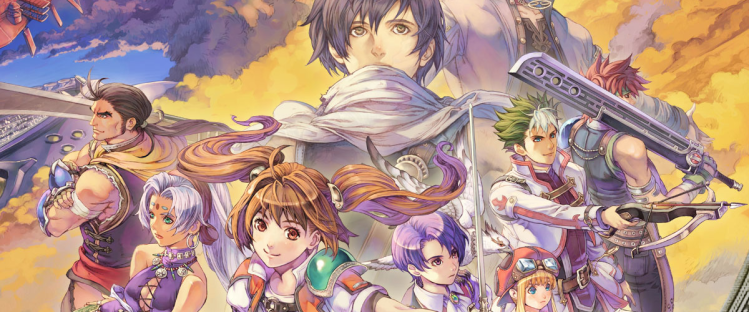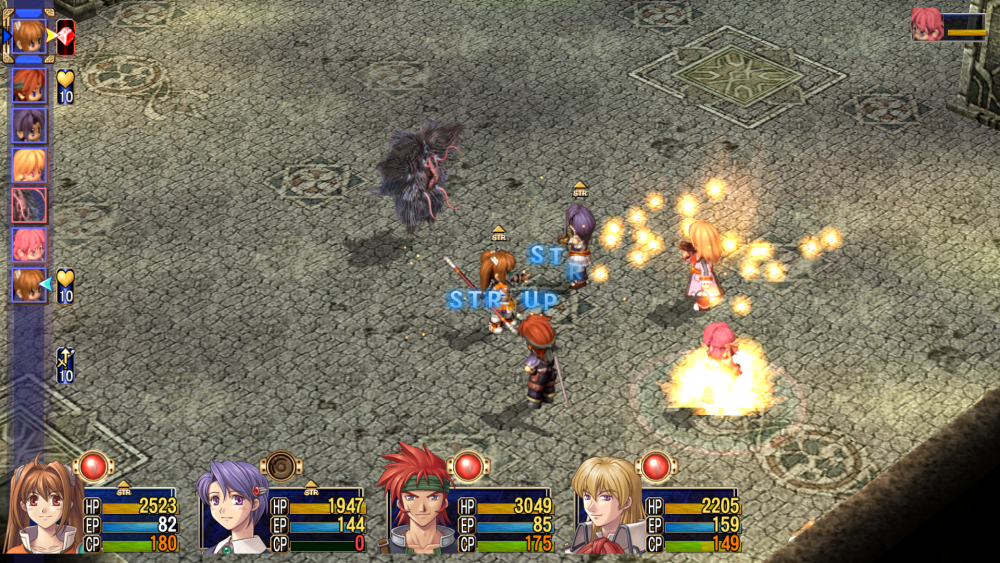The combat system lacks finesse
Second Chapter’s combat borrows a lot of concepts from a standard strategy-RPG template: it’s turn-based, but characters move and attack on a grid. The turn order alludes to Final Fantasy X, where spells take a certain number of turns to charge, while others grant more turns or slow down others. Certain attacks and spells have areas of effect, so where each party member stands during a given turn makes a difference. I had fun figuring it all out at first, but it buckles under the weight of a few puzzling decisions.
You can move or attack in the same turn. When you attack, you do move to the target, but you don’t get to choose from which square you fight. You can ignore this aspect of combat early on, but later bosses make dodging their big attacks crucial to surviving the fight. Say, for example, an enemy standing next a party member is about to fire a laser that will kill them. On that party member’s turn, you can’t choose to have them circle behind them and attack from safety; the “move” command would let you get behind the enemy but not attack. Many attacks also push enemies in particular direction, so that you can’t choose from which direction to attack means you can’t choose to push enemies into spells they’d otherwise avoid. Seeing that the enemy can do exactly this makes the inability to do it all the more frustrating. But for whatever reason, you can’t.
Without that degree of finesse, the combat system feels far too simple to really make a case for how much time you spend fighting monsters. Because all of the combat takes place on a grid, it takes longer than usual for battles to play out. And the longer I spent in these battles, the more I wanted to just skip every fight and just get to the next story sequence. A few bosses take advantage of the grid-based combat system (one boss constantly push you around the map, preventing you from casting spells on your allies), but for the most part, I wondered why the grid was even there.
It has hints of potential (the upgrade system lets you customize characters, but this amounts to which character you want to cast which spells), the combat system doesn’t go far enough in fleshing out its own potential, and it suffers as a result.
The filler
Second Chapter also resembles other JRPGs by being long as hell, and a lot of it is filler Even worse, many of the quests involve your party simply moving from one part of the map, starting a story sequence, then moving back to the original point. An entire chapter revolves around your party making the trek back through every city you’ve already visited by foot (where before you flew from town to town via airships) in order to restore power to a telephone in each city. The last few boss fights end up being harder versions of boss fights you’ve already fought, except with higher numbers across the board. This made my much of my time in Liberl feel like a chore.
Feeling like you’re out of the loop
Trails in the Sky consists of one story told across two games. I haven’t played the First Chapter of Trails in the Sky, and while I didn’t have much trouble getting up to speed on the story, the game did I assume I’d seen the first half of the story. I never got objective markers telling me where to go (which I actually appreciated, since it let me explore), but often, a character would tell me to go to specific place without much direction, assuming I already knew how to get there. This makes sense in world, since Estelle knows how to get around, but I felt like perhaps the first game had laid out where everything was and assumed I knew that already. So if you’re interested in jumping into this game, be prepared to play an entire other game before you can truly feel comfortable in this world.
Conclusion
In a year filled with enormous time-sinks that make their worlds rich and worth exploring (Bloodborne, the Witcher 3, Fallout 4), Second Chapter simply isn’t worth your time if you’re not already invested in its characters or its world. Though it’s technically a 9-year-old game, it feels far older, stuck in many of the conventions other RPGs from around the world have already moved past. If you have to see how the story ends, it’s worth seeing through, but everyone else should look for something else to spend this much time with.
Score: 57/100
Legend of Heroes: Trails in the Sky Second Chapter is available now for PSP, Vita (through backward compatibility) and PC. The publisher provided GamesBeat with a copy of the PSP version for this review.
VentureBeat's mission is to be a digital town square for technical decision-makers to gain knowledge about transformative enterprise technology and transact. Learn More



